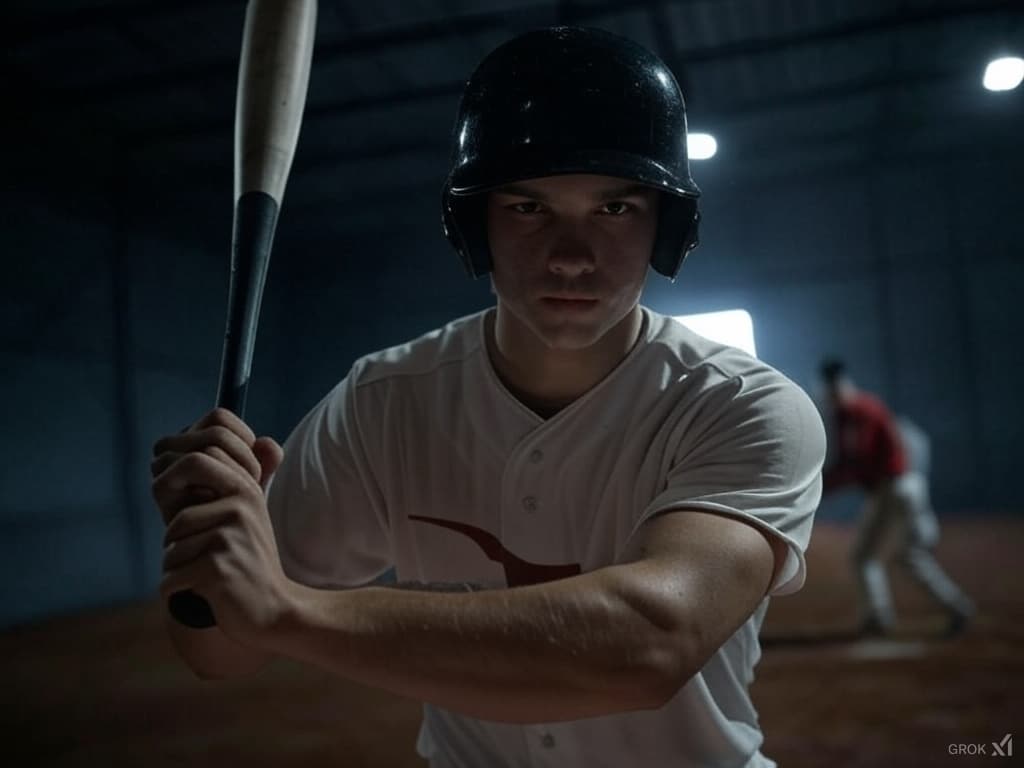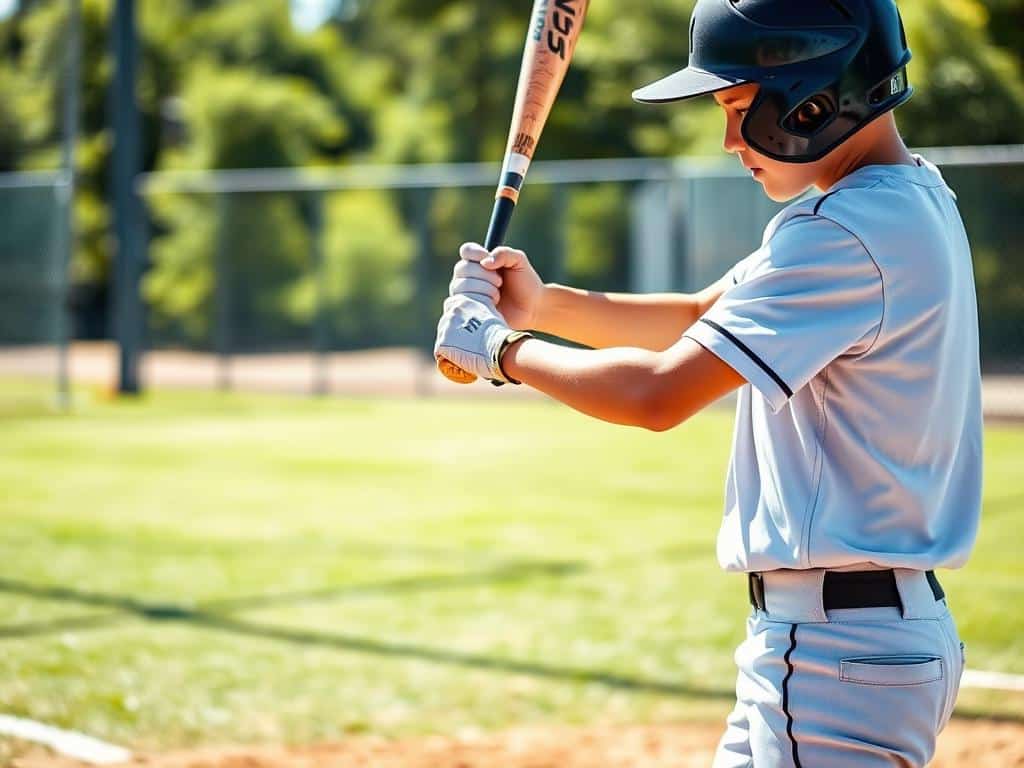
Tight Hips = Slow Bat Speed! Unlock Hidden Power with This 3-Minute Fix
Did you know that weak glutes and tight hip flexors can reduce your bat speed by up to 15%? That’s right—your lower body mechanics are the secret to unlocking explosive power and staying injury-free. Whether you’re a baseball player or coach, understanding the science behind hip health is a game-changer.
Research from TheReadyState.com shows that improving hip strength can enhance performance and prevent common injuries like knee pain and lower back discomfort. By focusing on dynamic stretches and targeted exercises, you can correct rotation flaws and boost your range of motion. It’s not just about flexibility—it’s about building stability and power in every swing.
I’ve seen firsthand how incorporating these drills into your routine can transform your game. From the Frankenstein Walk to hip circles, these exercises are backed by science and designed to deliver results. Ready to fix your mechanics and dominate the plate? Let’s dive in!
Key Takeaways
- Weak hips can lead to knee pain, ankle pain, and reduced performance.
- Strengthening hip flexors improves bat speed and prevents injuries.
- Dynamic stretches like the Frankenstein Walk enhance range of motion.
- Consistency in hip exercises is key to long-term results.
- Science-backed drills from credible sources ensure effectiveness.
Introduction: The Importance of Hip Mobility
Your ability to generate power at the plate starts with how well your lower body moves. Proper hip conditioning isn’t just about flexibility—it’s about building stability and preventing injuries that can sideline your game. Let’s break down why this matters so much.
Overview of Hip Mobility Benefits
Improved hip mobility enhances your range of motion, allowing for smoother, more efficient movements. Research shows that limited hip flexion and internal rotation are common in athletes with hip pathologies, affecting activities like squatting and pivoting. By addressing these issues, you can unlock better performance and reduce the risk of injury.
Here’s what you gain from better hip conditioning:
- Increased Stability: Strong hips support your entire body during explosive movements.
- Enhanced Flexibility: Greater range of motion means more power in every swing.
- Injury Prevention: Proper conditioning reduces stress on your knees, back, and other joints.
How Hip Conditioning Impacts Bat Speed and Injury Prevention
Your hips are one major piece to the engine of your swing. When they’re tight or weak, your bat speed suffers. Studies indicate that limited hip abduction range of motion is a predictor of future lower extremity injuries. By strengthening your hip flexors and improving flexibility, you can generate more force and stay injury-free.
Consider this: prolonged sitting shortens key muscles like the psoas, leading to imbalances and discomfort. Incorporating targeted exercises into your routine can counteract these effects, keeping you at the top of your game.
Ready to take your performance to the next level? Let’s dive into the exercises that will transform your mechanics and keep you swinging strong.
Understanding Hip Mechanics and Target Muscles
Your swing’s power starts with the muscles around your hips—let’s break them down. The hip joint is a complex structure involving 27 muscles that control movement and stability. Knowing how these muscles work can help you optimize your performance and avoid injuries.
Key Hip Muscles: Gluteus, Hip Flexors, and More
The gluteus maximus is the largest muscle in your body and plays a critical role in hip extension. It works alongside the hip flexors, which help lift your leg during a swing. These muscles are essential for generating power and maintaining balance.
Another key player is the gluteus medius, which stabilizes your pelvis during movement. Weakness here can lead to knee pain and reduced performance. Strengthening these muscles ensures smoother, more efficient swings.
Avoiding Overuse: The Role of the Tensor Fasciae Latae
The tensor fasciae latae (TFL) is a small but important muscle on the side of your hip. Overusing it can lead to imbalances and discomfort, especially if other muscles like the glutes are weak.
To prevent overuse, focus on balanced conditioning. Incorporate exercises that target all major hip muscles, ensuring no single muscle bears too much strain. This approach reduces the risk of injury and keeps your swing powerful.
For more insights on hip mechanics, check out this detailed study on muscle roles and injury prevention.
Warm-Up Drills to Activate Your Hips
Activating your hips before training is the secret to unlocking explosive power and preventing injuries. Dynamic warm-ups are essential for preparing your joints and muscles for intense activity. They boost blood flow, increase synovial fluid production, and enhance your range of motion.
Dynamic Movements: Frankenstein Walk and Hip Circles
The Frankenstein Walk is a fantastic way to loosen up your hamstrings and hips. Start by standing straight, then lift one leg straight out in front of you. Reach your opposite hand to touch your toes. Alternate legs and repeat for 10-12 steps. This movement not only stretches your muscles but also improves coordination.
Next, try hip circles. Stand on one leg and rotate the other leg in a circular motion. Do 10 circles clockwise, then switch directions. This exercise targets your hip flexors and glutes, ensuring they’re ready for action.
Preparation Techniques to Boost Flexibility
Dynamic warm-ups are more effective than static stretching for increasing flexibility. They prepare your body for movement by engaging multiple muscle groups. Aim for a 5-10 minute warm-up to maximize blood flow and joint lubrication.
Here’s a quick guide to get started:
| Exercise | Duration | Benefits |
|---|---|---|
| Frankenstein Walk | 1-2 minutes | Stretches hamstrings, improves coordination |
| Hip Circles | 1-2 minutes per leg | Activates hip flexors and glutes |
Consistency is key. Practicing these exercises 3-5 times a week can significantly improve your flexibility and reduce the risk of injury. Remember, a proper warm-up sets the stage for a powerful, injury-free performance!
Essential Hip Mobility Drills
Strong hips are the foundation of explosive power and injury prevention. If you’re looking to enhance your swing and stay pain-free, mastering these essential drills is a must. Let’s dive into two game-changing techniques: Controlled Articular Rotations (Hip CARs) and progressive warm-up routines.
Controlled Articular Rotations (Hip CARs)
Hip CARs are a powerful way to improve your range of motion and joint integrity. This drill combines passive stretching with isometric holds, making it highly effective for enhancing flexibility and stability. Here’s how to do it:
- Start on all fours with your hands under your shoulders and knees under your hips.
- Lift one leg and slowly rotate it in a circular motion, keeping your core engaged.
- Perform 3-5 reps per side, focusing on smooth, controlled movements.
For best results, aim for 2-3 sets. This drill not only boosts flexibility but also strengthens the muscles around your joints, reducing the risk of injury.
Progressive Warm-Up Routines for Active Stretching
Active stretching is key to preparing your body for intense activity. Unlike static stretches, these movements engage multiple muscle groups, improving blood flow and joint lubrication. Here’s a simple routine to get started:
- 90/90 Hip Opener: Sit with one leg bent at 90 degrees in front and the other bent at 90 degrees to the side. Hold for 60 seconds, then switch sides.
- Quadruped Rockback: On all fours, gently rock your hips back toward your heels, stretching your thighs and glutes. Repeat 5 times.
Incorporate these exercises into your warm-up 3-5 times a week. Consistency is key to unlocking your full potential and staying injury-free.
By combining controlled rotations with active stretching, you’ll not only improve your range of motion but also build the stability needed for explosive power. Ready to transform your game? Start today!
Integrating Resistance Bands and Weights
Unlock your full potential by combining resistance bands and weights for ultimate stability and power. This dynamic duo not only builds strength but also enhances your range of motion, ensuring you stay injury-free and perform at your best.
Band-Based Exercises for Enhanced Stability
Resistance bands are a versatile tool for activating stabilizing muscles and improving joint mobility. Start with Lateral Walks to target your hip rotators—essential for lateral movement in sports. Place the band around your thighs and take 8–15 steps in one direction, then repeat on the opposite side.
Next, try the Clamshell Exercise to strengthen your glutes and prevent knee pain. Lie on your side with the band around your knees, then lift your top leg while keeping your feet together. Aim for 1–3 sets of 8–15 reps.
Weight Training Integration: Lateral Step-ups and Deadlifts
Weights like dumbbells and kettlebells can amplify your strength without sacrificing mobility. The Lateral Step-Up is perfect for building power in your legs. Stand beside a step, place one foot on it, and push through your heel to lift your body. Perform 2–3 sets of 8–15 reps on each side.
For a full-body workout, incorporate Single-Leg Romanian Deadlifts. Hold a weight in one hand, stand on one leg, and hinge at your hips to lower the weight toward the floor. This exercise improves balance and strengthens your hamstrings. Do 2–3 sets of 8–15 reps per side.
By blending resistance bands with traditional weights, you’ll create a balanced routine that enhances stability, power, and flexibility. Ready to take your performance to the next level? Start integrating these exercises today!
Mobility Exercises Tailored for Different Lifestyles
Whether you’re sprinting on the track or enjoying a leisurely walk, your body’s flexibility plays a huge role in performance. Tailored exercises ensure that everyone, from athletes to seniors, can move better and stay injury-free. Let’s explore routines designed for your specific needs.
Drills for Runners and Athletes
For high-intensity athletes, dynamic stretches like the 90/90 Hip Opener are game-changers. This exercise targets the lateral glutes and external rotators, improving squat depth and overall performance. Another must-try is the Figure Four Glute Stretch, which should be held for 45 seconds to a minute for maximum benefit.
Runners can benefit from passive stretching combined with isometric holds, which increase hip extension capacity and reduce strain on the knee and leg. Consistency is key—aim for daily or multiple weekly sessions to see results.
Mobility Workouts for Seniors and Casual Exercisers
For seniors or those with a more relaxed fitness routine, gentle exercises like the Bear Sit Stretch can improve flexibility without overloading the joints. This stretch increases the extensibility of the adductor muscles, making everyday movements easier.
Another great option is the Quadruped Rockback, which gently stretches the thighs and glutes. This exercise is perfect for those looking to improve body awareness and reduce stiffness. For more tips, check out this detailed guide on mobility routines.
No matter your fitness level, these exercises can help you move better and feel stronger. Start today and see the difference!
Combining Stretching and Strengthening Techniques
Maximizing your range of motion isn’t just about flexibility—it’s about strength too! To truly enhance your movement, you need to balance passive stretching with active isometric holds. This dual approach not only improves flexibility but also builds the stability needed for powerful, injury-free performance.
Passive Stretching with Active Isometric Holds
Passive stretching involves holding a position to lengthen muscles, while active isometric holds engage those muscles to build strength. Combining these techniques can significantly enhance your range of motion. For example, the 90/90 Hip PAILS & RAILS drill targets deep hip muscles, improving external rotation and squat depth.
Here’s how to do it:
- Sit with one leg bent at 90 degrees in front and the other bent at 90 degrees to the side.
- Push your front knee into the ground for 5 seconds (isometric hold), then relax.
- Repeat for 3-5 reps per side.
Dual Approaches: How to Maximize Range of Motion
To maximize your range of motion, integrate both passive and active techniques into your routine. The Lunging Hip Flexor Stretch is a great example. It elongates the hip flexor complex while engaging the glutes and abs for better long-term results.
Here’s a quick guide to combining these methods:
| Exercise | Duration | Benefits |
|---|---|---|
| 90/90 Hip PAILS & RAILS | 3-5 reps per side | Improves external rotation and squat depth |
| Lunging Hip Flexor Stretch | Hold for 60 seconds | Elongates hip flexors, engages glutes and abs |
By blending passive stretching with active holds, you’ll not only improve flexibility but also build the strength needed for explosive power. Start today and see the difference!
Avoiding Common Hip Mobility Mistakes
Avoiding common mistakes in your routine can save you from unnecessary pain and setbacks. Many athletes unknowingly harm their progress by repeating the same errors in their training. Let’s dive into what to avoid and how to stay on track for better performance and injury prevention.
Exercises to Steer Clear of When Experiencing Hip Pain
High-impact moves like deep squats or heavy deadlifts can exacerbate hip pain if performed improperly. These exercises place significant stress on your joints, especially if your form is off. Instead, opt for controlled alternatives like bodyweight squats or step-ups to protect your knee and leg muscles.
Another common mistake is overtraining. Pushing too hard without proper recovery can lead to tightness and discomfort. Listen to your body and modify exercises when needed. For example, replace high-intensity sprints with low-impact cycling to reduce strain on your hip flexors.
Corrective Strategies for Safer Movement
To avoid harmful movement patterns, focus on proper alignment. Keep your foot flat and your side stable during exercises like lunges. This ensures even weight distribution and reduces the risk of injury.
Here’s a quick guide to safer alternatives:
- Deep Squats → Bodyweight Squats
- Heavy Deadlifts → Romanian Deadlifts with Light Weights
- High-Impact Sprints → Low-Impact Cycling
By making these adjustments, you’ll not only protect your joints but also maintain progress in your training. Remember, consistency and proper technique are key to long-term success!
This is a video in the Swing Shift series…
Boost your hitting skills with Swing Shift’s science-backed practice system! This program is packed with features to improve hand path stability, timing, and power. Enjoy engaging drills for consistent progress and fun challenges to keep training exciting. Swing Shift is designed to help players succeed at every level.
The Swing Shift platform lets you focus on key mechanics like bat angle, balance, and hand path control. Dive into step-by-step video lessons that cover power, contact, and rhythm, breaking down the science behind a great swing. With personalized feedback and progress tracking, you can refine your technique and watch your results improve.
Whether you’re a youth athlete, high school player, or elite hitter, Swing Shift is trusted by families and coaches everywhere. Master core skills like bat control, weight transfer, and rotational power with drills designed for real game results. Start your journey to hitting greatness with Swing Shift!
Swing Shift’s practice system offers a wide range of tools to elevate your hitting:
- RNT-based drills for real-time correction
- Engaging challenges for competitive practice
- Personalized training goals and skill progression
- Exclusive videos on timing, power, and consistency
- Hands-on feedback to track and improve your swing mechanics
- Trusted by dedicated parents, players, and coaches
Reach your full potential with Swing Shift’s comprehensive practice system. Elevate your hitting with cutting-edge techniques and proven, science-based training.
Conclusion
Transform your game by focusing on the foundation of your swing—your lower body mechanics. Integrating targeted exercises into your routine isn’t just about flexibility; it’s about building stability and power. Research shows that improving hip strength can prevent injuries like knee pain and lower back discomfort.
By consistently practicing the drills we’ve discussed, you’ll enhance your range of motion and unlock explosive bat speed. Remember, it’s not a one-time fix—it’s a commitment to your body and performance. Start today and see the difference!
Ready to take your swing to the next level? Explore more science-backed tips to dominate the plate. Your journey to injury-free power begins now!
FAQ
Why is hip conditioning important for baseball players?
Hip conditioning boosts bat speed and prevents injuries by improving rotation mechanics. Strong, flexible hips allow for explosive movements and better control during swings!
What muscles should I focus on for better hip mobility?
Target the gluteus, hip flexors, and tensor fasciae latae. These muscles play a key role in stabilizing and powering your movements on the field.
Are there specific warm-up drills to activate my hips?
Absolutely! Try Frankenstein walks and hip circles. These dynamic movements prepare your body for action while enhancing flexibility.
What are Controlled Articular Rotations (Hip CARs)?
Hip CARs are controlled, circular motions that improve joint mobility and strength. They’re perfect for increasing your range of motion and preventing stiffness.
Can resistance bands help with hip stability?
Yes! Resistance bands are fantastic for building stability. Exercises like lateral walks and banded squats enhance muscle engagement and control.
Are there mobility exercises for seniors or casual exercisers?
Definitely! Gentle stretches like seated hip openers and standing leg swings are great for improving flexibility without overexertion.
How can I combine stretching and strengthening for better results?
Use passive stretches followed by active isometric holds. This dual approach maximizes flexibility while building strength in key muscle groups.
What exercises should I avoid if I have hip pain?
Steer clear of deep squats or high-impact movements. Instead, focus on low-impact exercises like bridges or gentle lunges to avoid aggravating the area.




















